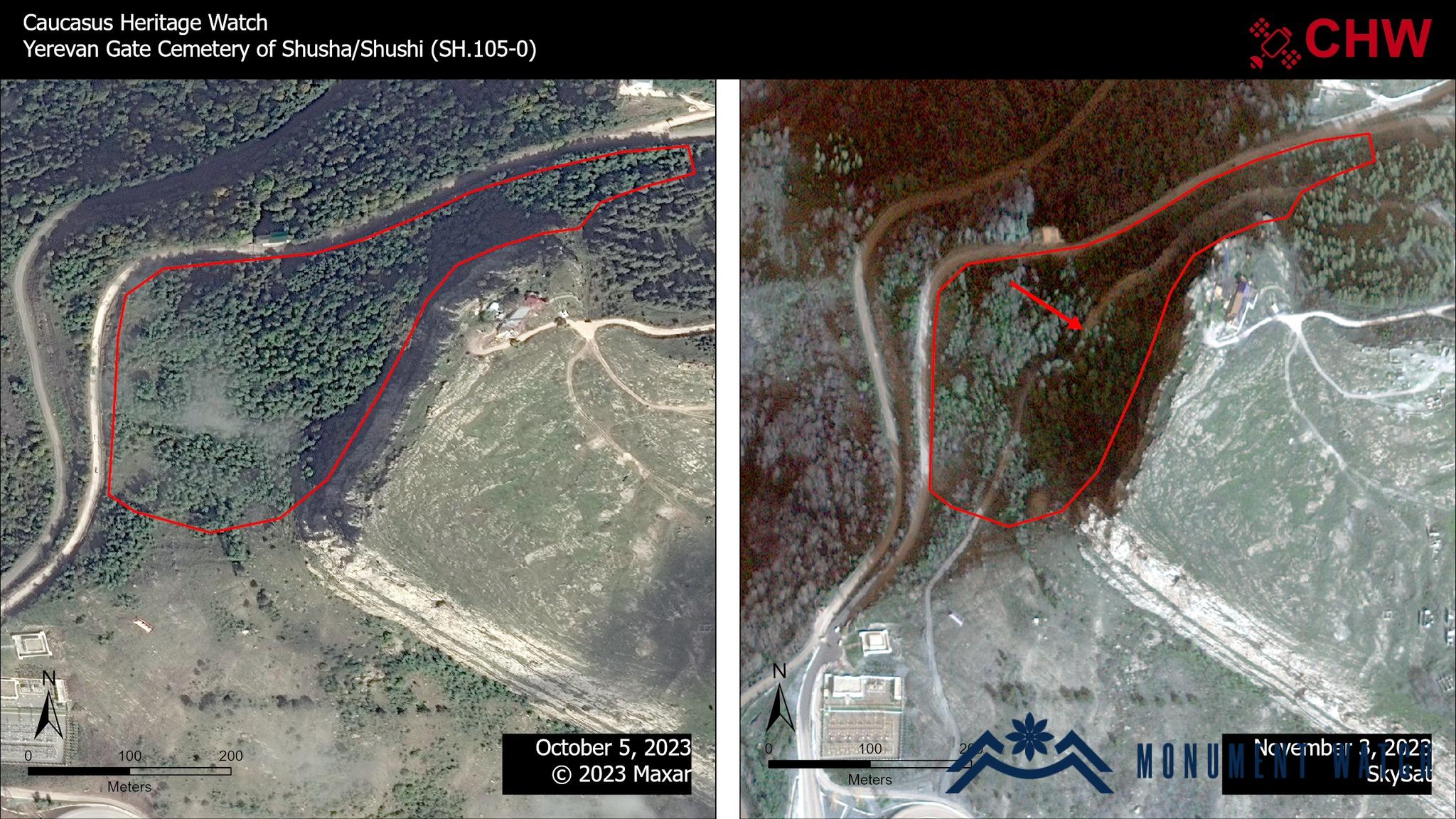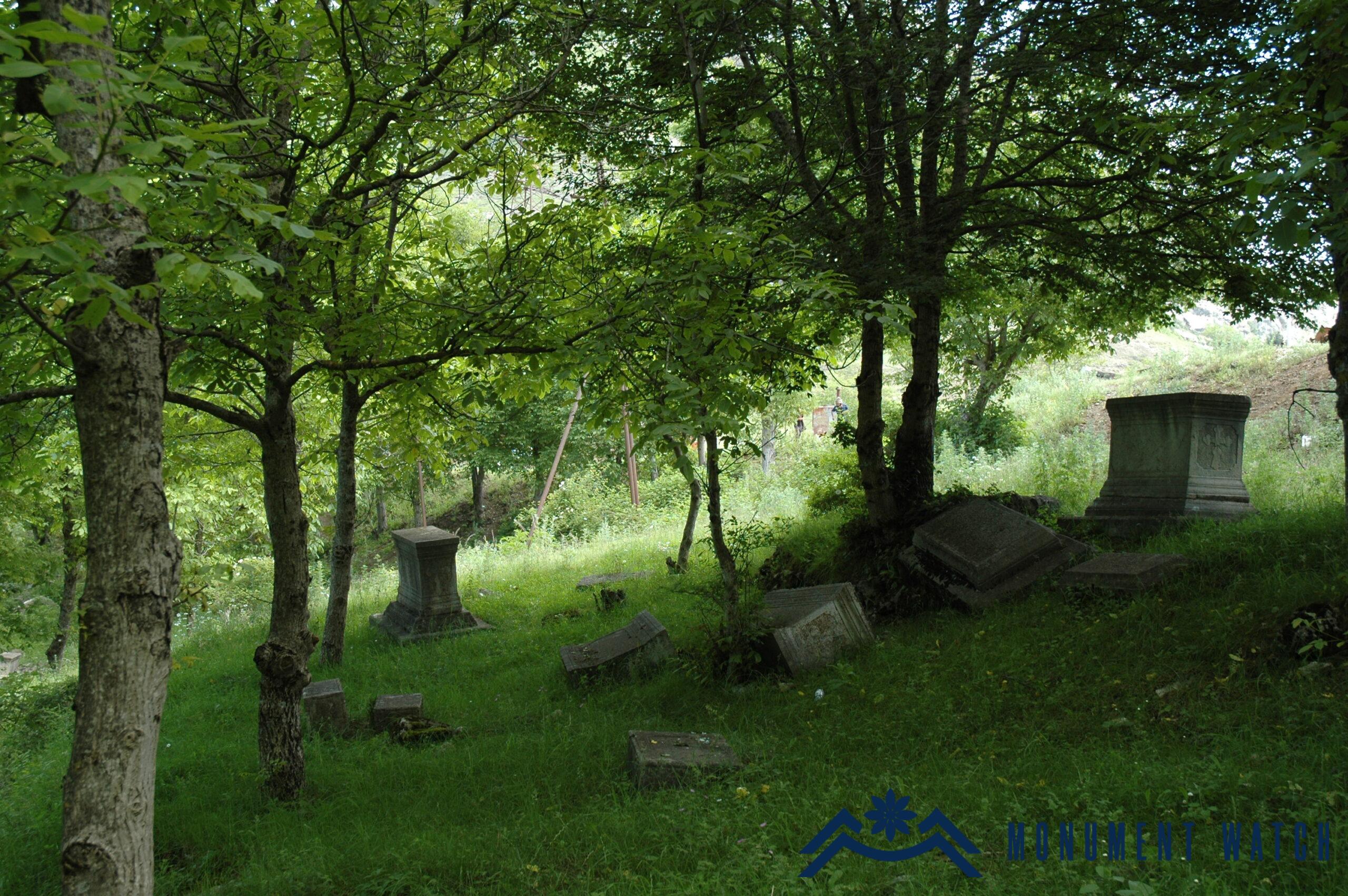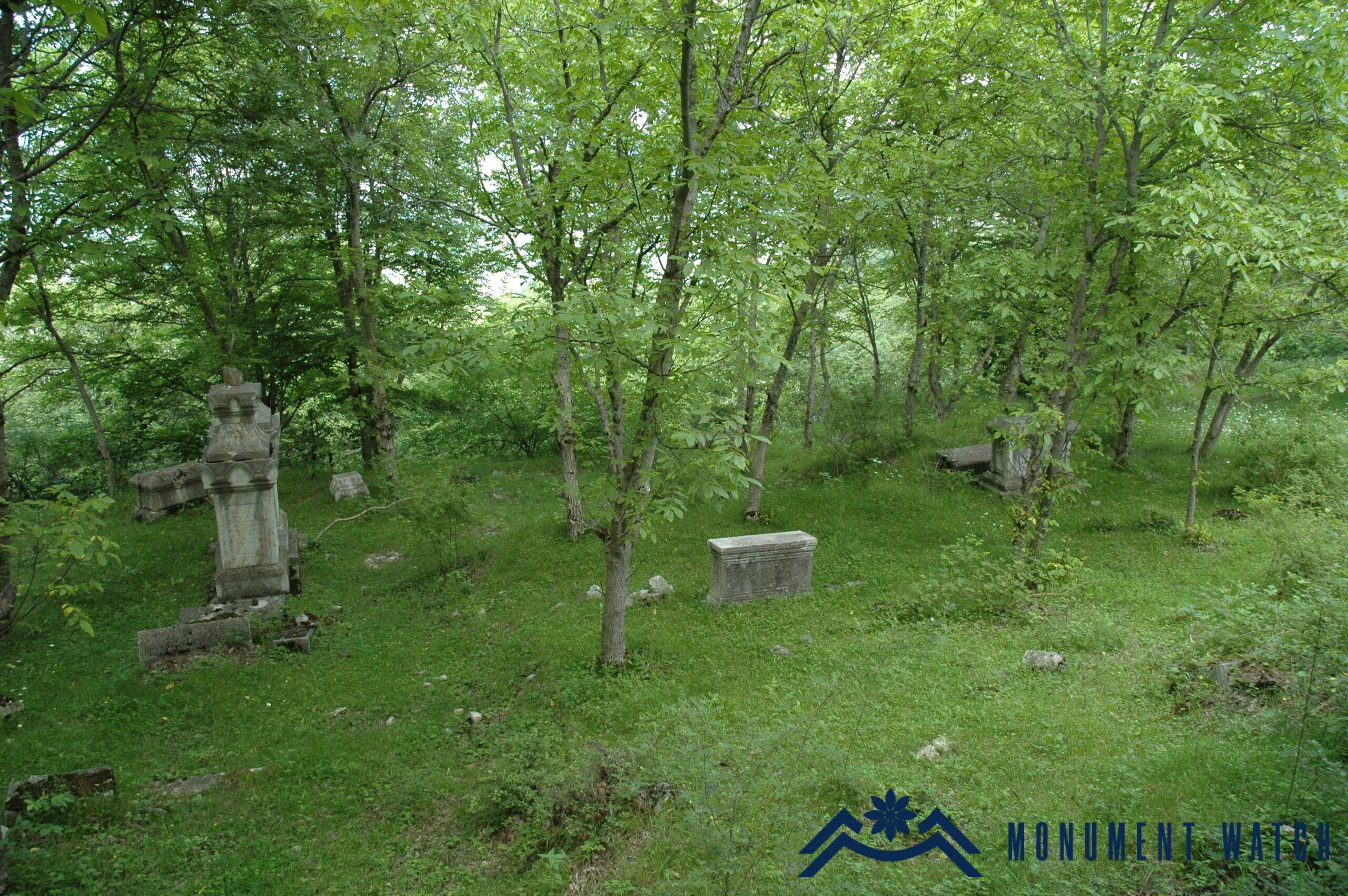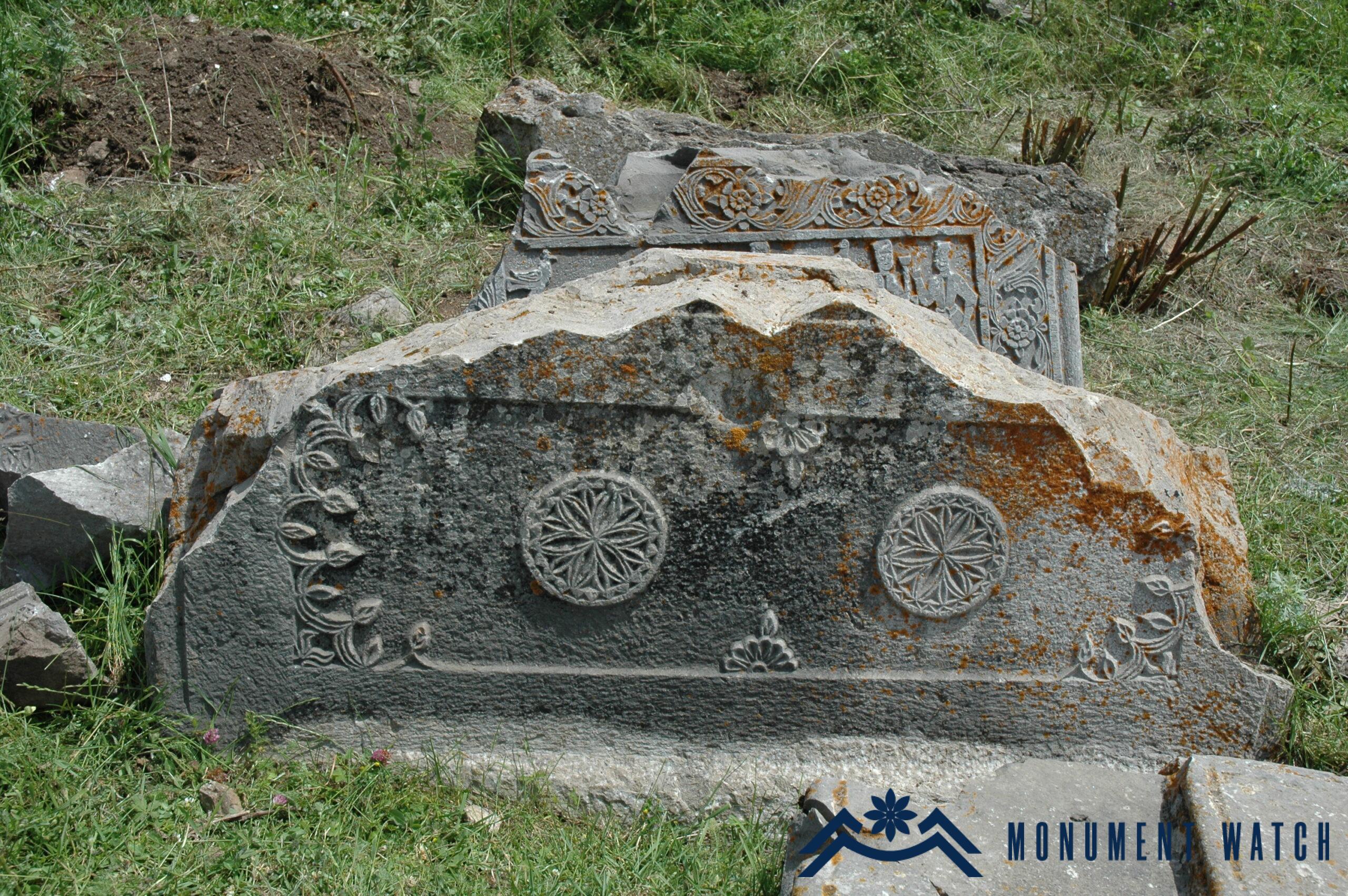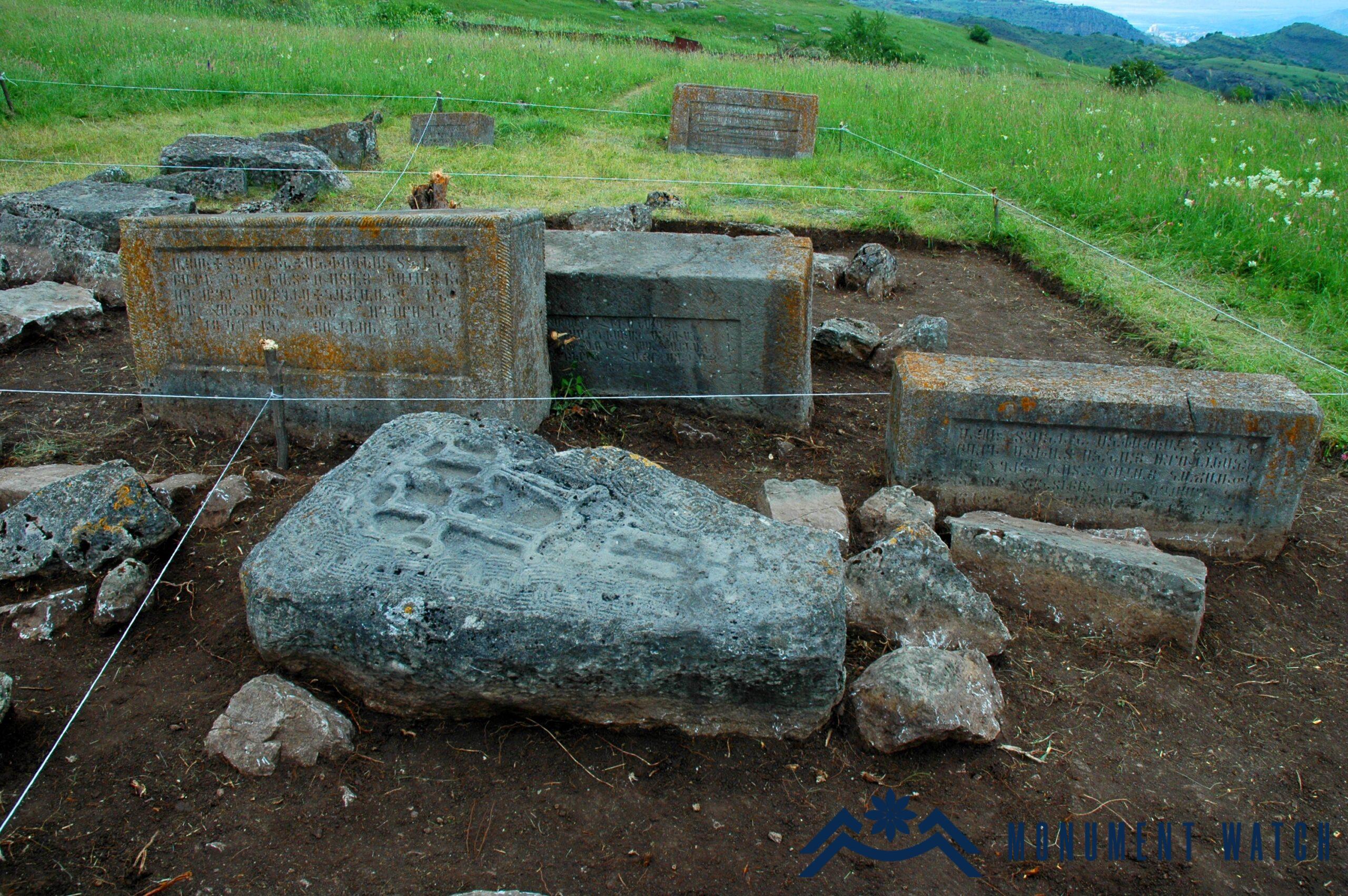Azerbaijan Engages in the Destruction of Cemeteries in Shushi
To eradicate the Armenian historical footprint from the occupied territories of Artsakh, Azerbaijan employed specialized equipment to demolish two historic cemeteries in Shushi between October 5 and November 3, 2023.
The International Center for Monitoring the Heritage of the Caucasus (Caucasus Heritage Watch) documented the destruction of cemeteries through satellite monitoring. According to their findings, Azeris utilized heavy equipment to pave a road through the historic Shushi cemetery, known as the cemetery next to the Yerevan gates (Fig.1) (https://www.facebook.com/CaucasusHW/posts/pfbid02HYEgX7C8Aan3phcs72youXCFeYW%20Y6ZbRC7x7y8THYc5eVDEXgymmF8oftnsNJr8Fl).
This cemetery, situated near the 6th Tsarist border gate, was an Armenian-Russian burial ground. Inscriptions indicate that the tombstones date back to the years 1843-1915, with earlier tombstones belonging to Russians and bearing inscriptions in the Russian language (Hayrutyunyan 2008, 35-45). These individual tombstones, regarded as masterpieces of architecture and art, were intricate multi-part monuments reaching heights of up to 3 meters, each originally adorned with a winged cross (Figs. 2-4).
The Caucasus Heritage Center has also verified the destruction of another Old Cemetery in Shushi (Fig. 5, https://www.facebook.com/CaucasusHW/posts/pfbid02qrHKStSizNTNTEkjX27FmUKdTm5nkstqSK2HZVgLMvUuVhxeNoDY8DyzskkvX7zrl). Consequently, the illustrated tombstones, partially demolished by the Azerbaijani population of Shushi during the Soviet era, have been completely removed (Figs. 6-9).
In the 1990s, only 45 tombstones remained in the cemetery, which had suffered significant damage during the Soviet era. Among these, one particular tombstone commemorates the passing of Stepan, a blacksmith from the village of Ghazanchi, Nakhichevan, in 1758 (Fig. 10). Stepan was among the numerous Armenians forcibly displaced from that village, which later inspired the naming of the Holy All Savior Ghazanchetsots Church in Shushi.
The Artsakh expedition, led by the Institute of Archaeology of the National Academy of Sciences of the Republic of Armenia (Petrosyan H., Safaryan V., Vardanesova T., Yengibaryan N., Titanyan M.), conducted extensive archaeological research in the city of Shushi and its surroundings during 2004-2005. Excavations of an ancient Armenian-Greek cemetery in Shushi revealed khachkars from the 12th-13th centuries (Fig. 11), suggesting that the Shushi plateau was inhabited as early as the 12th-13th centuries. Subsequently, in the 19th century, these khachkars were repurposed for new burials. Tombstones bearing Armenian inscriptions, discovered during the cleaning of the Old Cemetery of the city, hold significant historical importance.
Our response
It is crucial to highlight that the deliberate destruction of historical cemeteries in the occupied territories reflects a clear and intentional policy pursued by Azerbaijan. As a consequence of this policy, the cemeteries of Mets Tagher, Sghnakh, Shushi Northern, and Yerevan gates, along with the cemetery near the village of Vazgenashen, have already been subjected to destruction.
According to the decision of the International Court of Justice in The Hague on December 7, 2021, calls for the destruction of Armenian churches were prohibited. The court ruled that "Azerbaijan is obliged to take all necessary measures to prevent and punish acts of vandalism and desecration that were carried out against the Armenian cultural heritage..." (International Court of Justice, Application of the International Convention on the Elimination of All Forms of Racial Discrimination (Armenia v. Azerbaijan), 7 December 2021, No. 2021/34). It is crucial to underscore that the harm inflicted upon the cultural heritage of any nation represents a blow to the cultural legacy of humanity as a whole. Each nation contributes uniquely to the global cultural diversity. Per Article 4 of the 1954 Hague Convention for the Protection of Cultural Property in Time of Armed Conflict, any acts such as vandalism, theft, robbery, misappropriation, hostilities, and reprisals against cultural heritage are strictly prohibited. Additionally, the first Hague Protocol of 1954 explicitly forbids the destruction of cultural or spiritual values in occupied territories.
The intentional policy of destroying cultural heritage is also unequivocally condemned by UNESCO's 2003 Declaration "On the Deliberate Destruction of Cultural Heritage.
Used sources
- Harutyunyan 2008 - H. Harutyunyan, 18th-19th century tombstone inscriptions of Shushi, Yerevan, Publishing house of YSU.
- Petrosyan, Safaryan, Yengibaryan, Titanyan 2013 - Petrosyan G., Safaryan V., Yengibaryan N., Titanyan M., Archaeological evidence of the existence of ancient settlements on the territory of Shushi, Shushi Phenomenon. Historical and political science research, Workbooks, 1-2 (25-26), Yerevan, p. 30-39.
